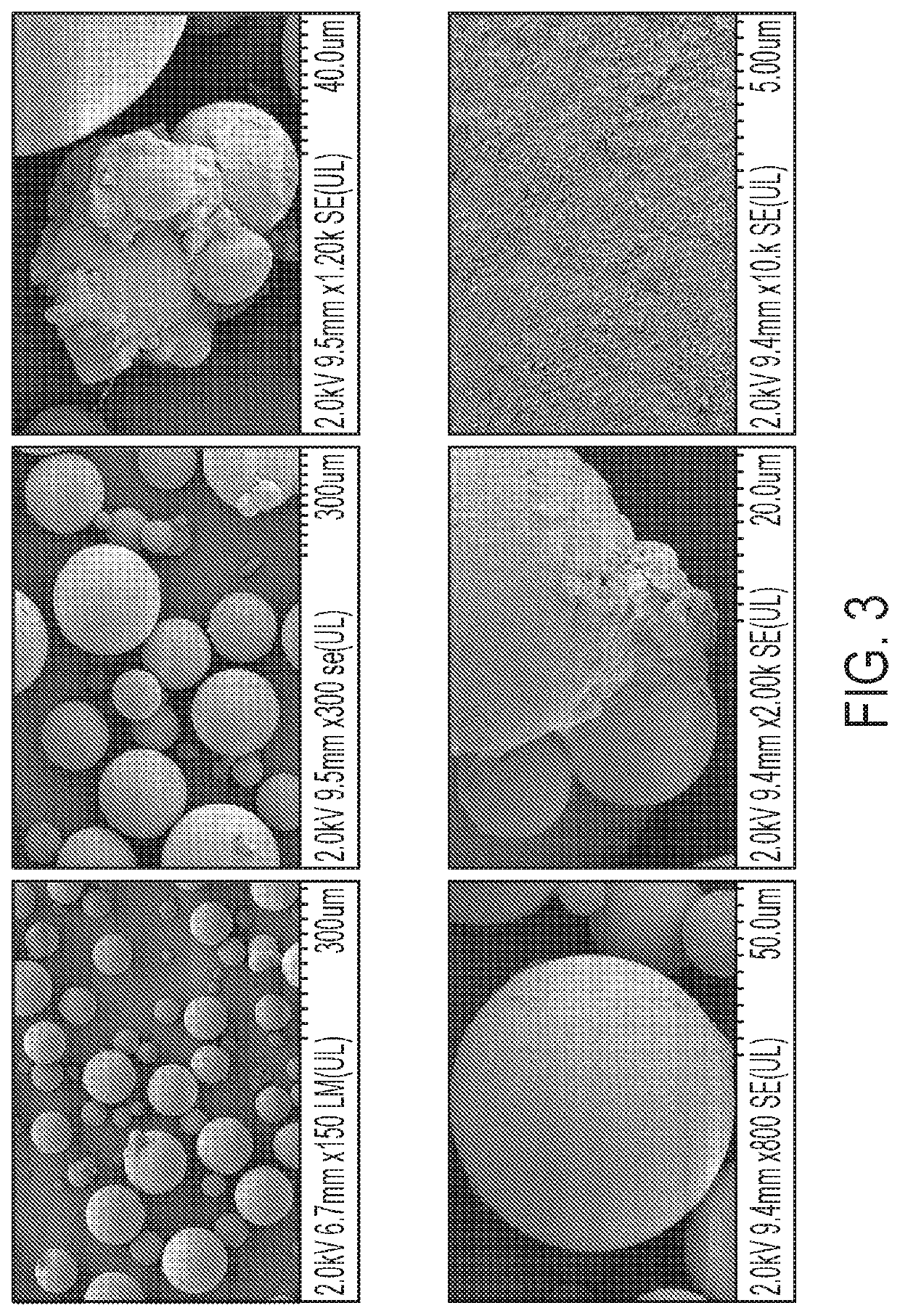Polyamide Particles and Methods of Production and Uses Thereof
a technology of polyamide particles and polyamide, applied in the direction of coatings, etc., can solve the problems of poor powder flow performance during the 3-d printing process, irregular particulate shapes and wide particle size distributions, and relatively few properties suitable for use in 3-d printing
- Summary
- Abstract
- Description
- Claims
- Application Information
AI Technical Summary
Benefits of technology
Problems solved by technology
Method used
Image
Examples
example 1
[0195]A 1 L stirred reactor from Parr Instruments was used to prepare polyamide 6 particles by melt emulsification. The reactor was loaded with 20 wt % polyamide 6 and 80 wt % 10,000 cSt PDMS oil. The mixture was then heated to 225° C. while stirring at 1000 rpm using a dual 4-blade propeller. After about 60 minutes, the mixture was discharged from the reactor onto dry ice to quench the mixture. The mixture was then filtered and washed to recover the polymer particles. The resultant polymer particles were passed through a 150-μm sieve. Approximately, 40 wt % of the polyamide 6 loaded into the reactor passed through the 150-μm sieve. FIG. 2 is an SEM micrograph of the particles after sieving, which illustrates the range of particle sizes as large.
example 2
[0196]A 2 L glass reactor from Buchi AG was used to prepare polyamide 12 particles by melt emulsification. The reactor was loaded with 1 wt % AEROSIL® R812S silica nanoparticles (by weight of the polyamide 12 in the final mixture) in 10,000 cSt PDMS oil. The mixture was heated to 200° C. before adding 23 wt % polyamide 12 pellets relative to the combined weight of the PDMS oil and polyamide 12. The reactor was mixed at 500 rpm for 30 minutes. The resultant mixture was discharged and cooled to ambient temperate at a rate of about 1° C. to about 3° C. per minute. The mixture was then washed with heptane and filtered through a 90 mm WHATMAN® #1 paper filter to recover the polymer particles. The resultant polymer particles were air dried overnight in a fume hood. The dried particles have a D50 of about 227 μm, and the dried particles passed through a 150-μm sieve have a D50 of about 124 μm.
example 3
[0197]Polyamide 12 particles (Samples 3-1 to 3-44) were prepared by melt emulsification in a 1 L glass kettle reactor. 10,000 cSt PDMS oil, 23% polyamide 12 (from RTP, EMX-Grivory, or from Arkema) relative to the combined weight of the PDMS oil and polyamide 12, and a desired amount of silica nanoparticles (AEROSIL® R812S or AEROSIL® RX50) by weight of polyamide 12 were added to the glass kettle. The order of addition was either (c) PDMS oil and silica nanoparticles mixed to a good dispersion then polyamide added or (d) PDMS oil, polyamide, and silica nanoparticles added before mixing. The nitrogen headspace purge was then turned on, and the mixture heated to a desired temperature (e.g., 200° C., 210° C., or 220° C.) over 90 minutes at 260 rpm. Once at temperature, the rotor speed was increased to a desired rpm. Samples were taken at various times. Once complete, heating and stirring were turned off, and the reactor was allowed to cool to room temperature before discharging the mixt...
PUM
| Property | Measurement | Unit |
|---|---|---|
| wt % | aaaaa | aaaaa |
| melting point | aaaaa | aaaaa |
| melting point | aaaaa | aaaaa |
Abstract
Description
Claims
Application Information
 Login to View More
Login to View More - R&D
- Intellectual Property
- Life Sciences
- Materials
- Tech Scout
- Unparalleled Data Quality
- Higher Quality Content
- 60% Fewer Hallucinations
Browse by: Latest US Patents, China's latest patents, Technical Efficacy Thesaurus, Application Domain, Technology Topic, Popular Technical Reports.
© 2025 PatSnap. All rights reserved.Legal|Privacy policy|Modern Slavery Act Transparency Statement|Sitemap|About US| Contact US: help@patsnap.com



